Lockheed Corporation, Burbank, California
Empire, ELLENI ELLSWORTH, 2008, video, runtime: 9 min
A short drive from the Empire Center Mall in the heart of Burbank, through wide suburban streets, then up quiet canyon roads, leads to Lockheed View Drive in the Verdugo Mountains. From there, a triangular imprint is visible on the valley below, an airport at one end, and a mass of big-box stores at the other. Wedged between the Golden State Freeway to the North, railroad tracks to the South, and runways to the West, this is the former site of The Lockheed Corporation's aircraft manufacturing plant.
For over 60 years, Lockheed produced airplanes, missiles and satellites in Burbank. Built on a tract of land surrounded by orange groves and farmland, the plant opened soon after the company was established in 1926. Operations were on a relatively small-scale until World War II, when Lockheed employed over 90,000 workers to keep up with the pace of wartime production. People came from all over the country to work at the plant, where some 19,000 planes were manufactured during the war. These were the boom years: as Lockheed grew, Burbank grew, aerospace shaping the city's character as it transitioned from rural farmland to industrial suburb.
After the war, returning servicemen found gainful employment and affordable housing in Burbank, where a factory salary could buy a large home with a yard and carport. Burbank became a company town as aerospace workers settled in the suburban housing tracts of the verdant, sun-filled San Fernando Valley. Though scaled back, production at the plant continued at a fast clip in the post-war years, as Lockheed began its foray into commercial aviation while continuing to fulfill government contracts.
The end of the Cold War marked the end of aerospace in Burbank. Following the industry' s contraction due to defense cutbacks, Lockheed closed the plant in 1992. The shuttered factory and resulting job loss became an all too familiar narrative in Southern California as aerospace companies throughout the region scaled down operations. After the Burbank plant was razed, the lot stood empty for almost a decade, its redevelopment held up by environmental concerns. In the 1980s, massive toxic waste contamination was discovered in the San Fernando Valley watershed, prompting the federal government to designate the area a Superfund site. Lockheed was held responsible, and to date has paid over $300 million towards cleanup. Today, these industrial by-products are all that remain of Burbank's industrial past: Lockheed Air Terminal has been renamed Bob Hope Airport, and the plant itself has been replaced by the Empire Center mall.
During World War II, aerospace and film, the two major industries of Burbank, came together when set designers from the Disney Company helped Lockheed camouflage its facility. Fake trees, plywood cars, and painted streets disguised the plant, making it disappear into the suburban landscape. Today, the plant has once again dissolved into its surroundings, though the residue of the past can still be traced, hidden in plain sight. At the mall, colorful, prop-like model planes sit on top of store signs along the freeway. Near the airport, the Lockheed Credit Union still takes deposits. And up in the Verdugo Hills, overlooking the Valley, is a street named Lockheed View.
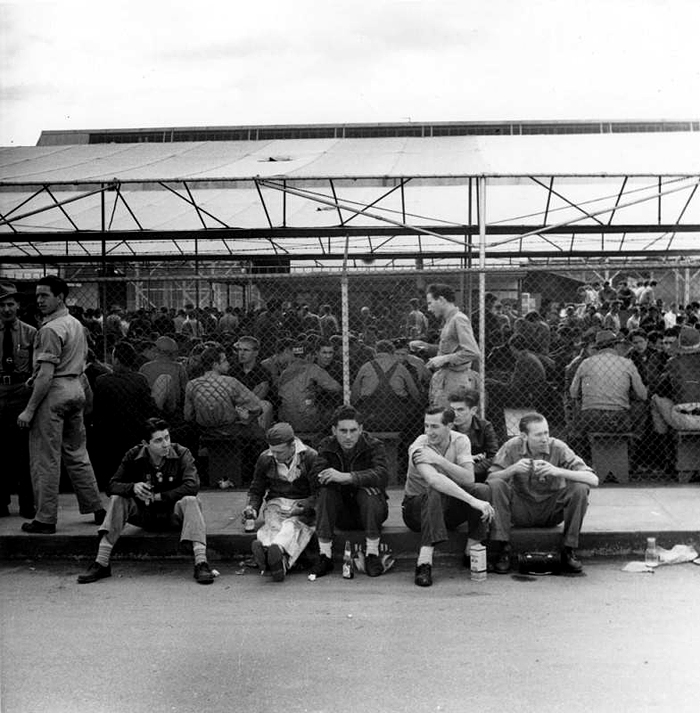
Burbank Lockheed Employees Taking Lunch, Ansel Adams, 1940, Courtesy of the Los Angeles Public Library
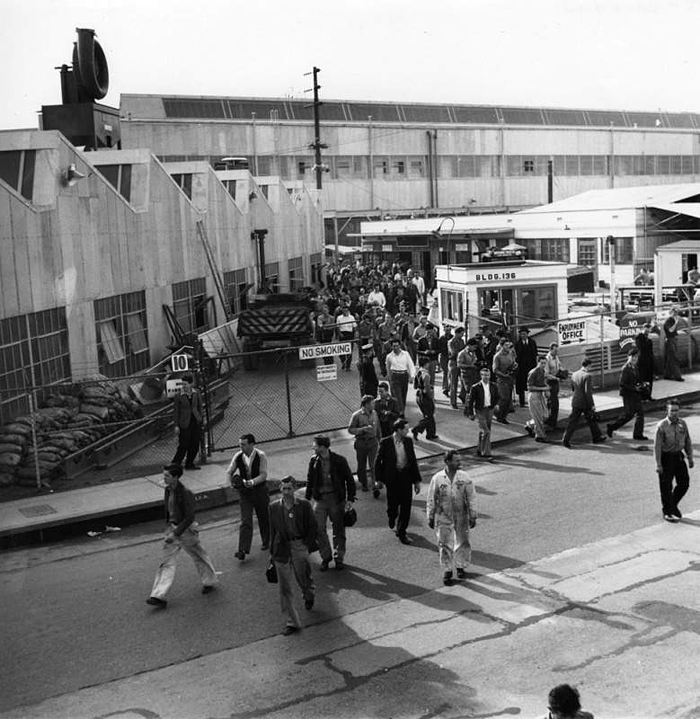
Burbank Lockheed Plant Employees, Ansel Adams, 1940, Courtesy of the Los Angeles Public Library
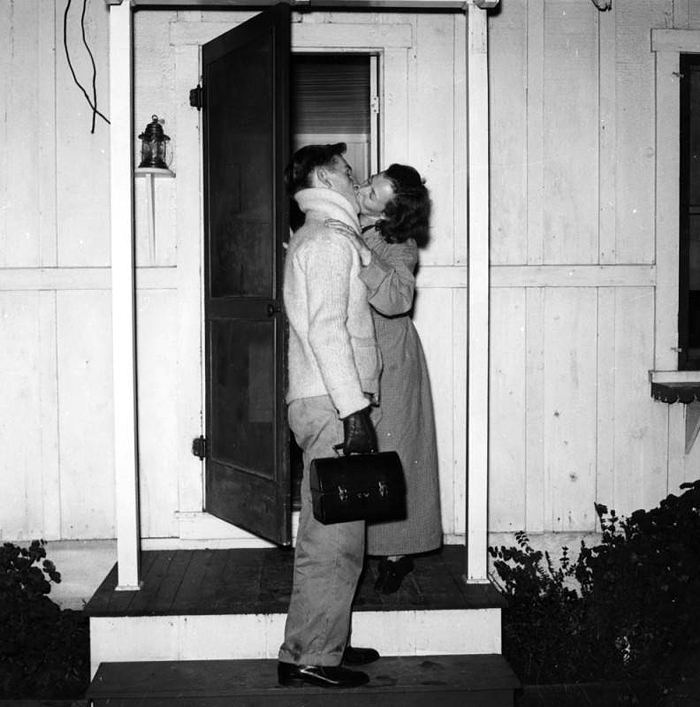
Cole and Dorothy Weston at Home, Ansel Adams, 1940, Courtesy of the Los Angeles Public Library; “Cole Weston, son of photographer Edward Weston, kisses his wife Dorothy goodbye outside their home before heading off to work. At this time, Weston worked as a metalsmith helping to build P-38s at the Lockheed Aircraft Company plant in Burbank for 51 cents an hour.” - City of Angels: The U.S. Breeds Its Air Power in the Fabulous Empire of Oomph, Fortune Magazine, 1941
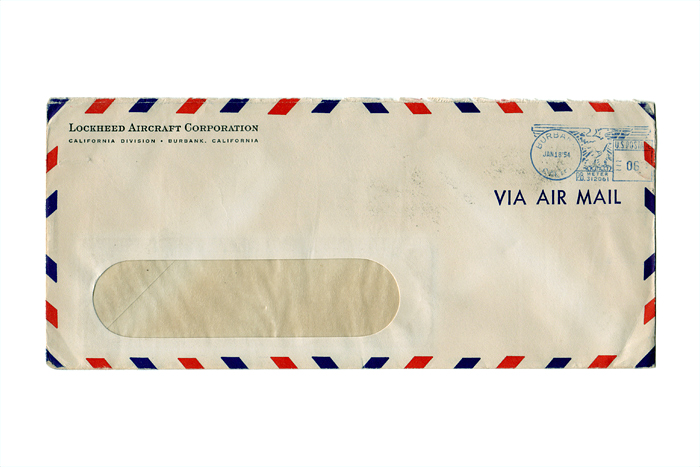
Aerospace Ephemera: Envelope, Lockheed Aircraft Corporation, Postmarked 1954
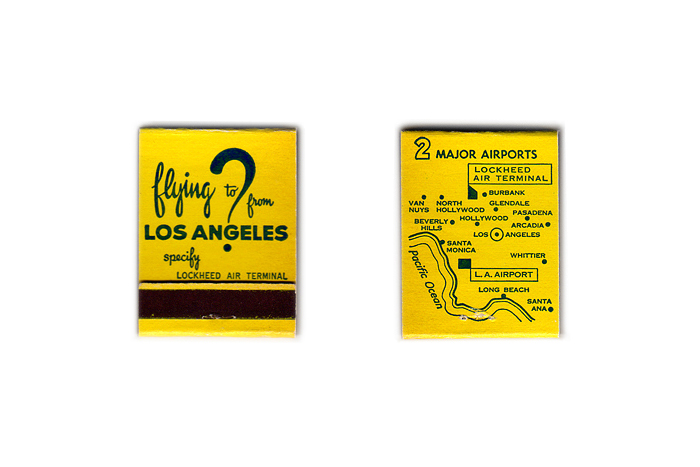
Aerospace Ephemera: Matchbook, Lockheed Air Terminal, Date Unknown
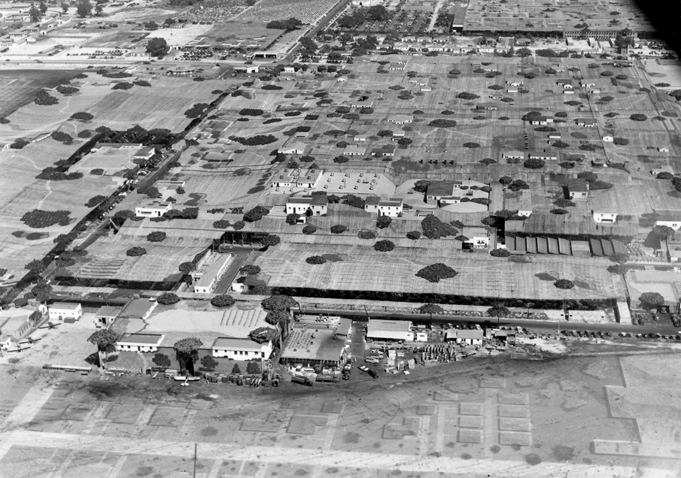
Camouflage Over the Lockheed Plant, 1942, Courtesy of The Burbank Historical Society
